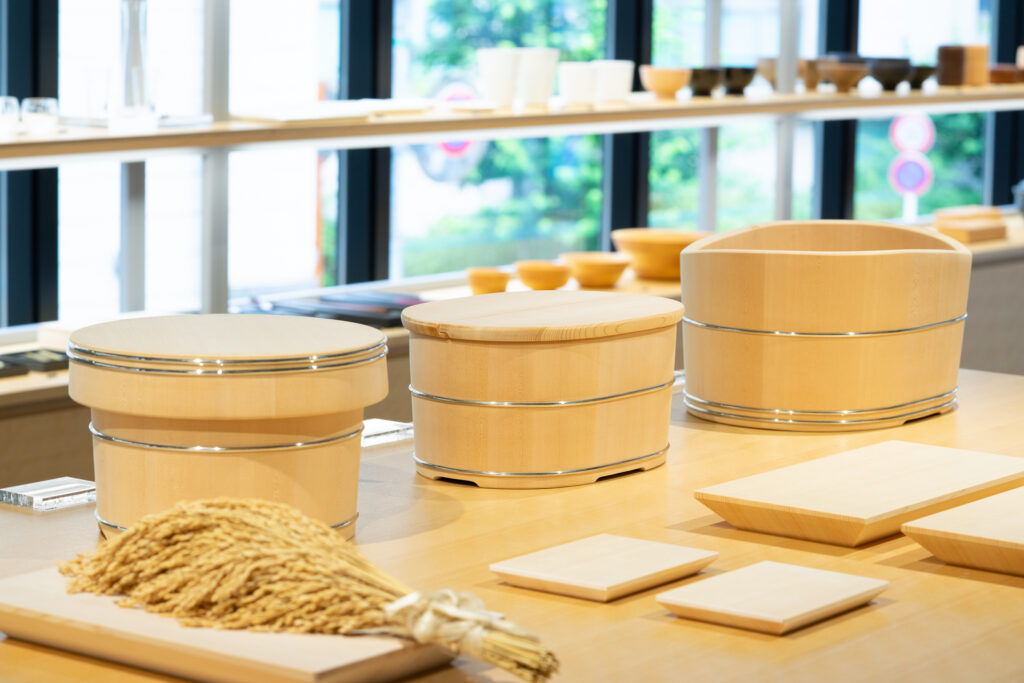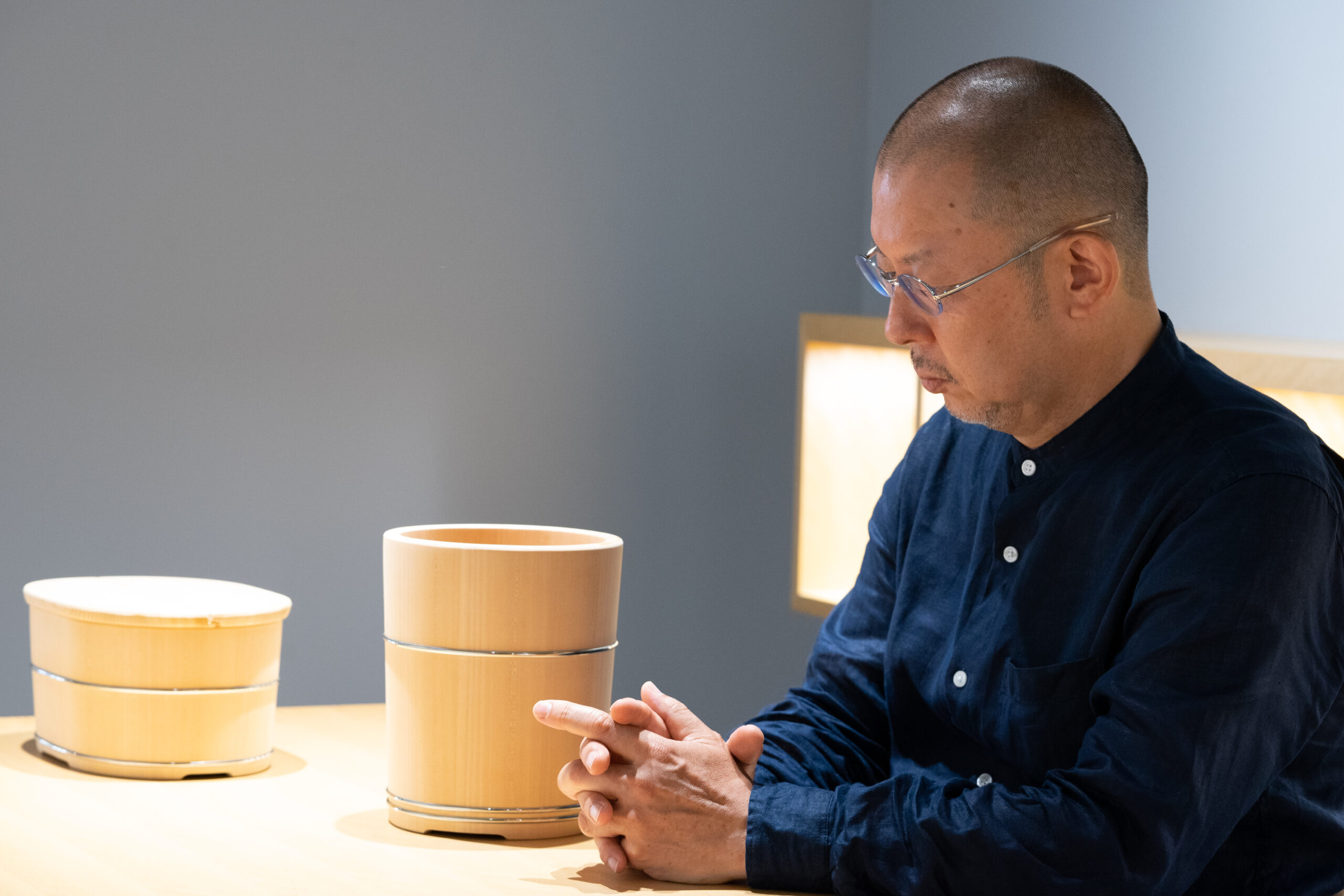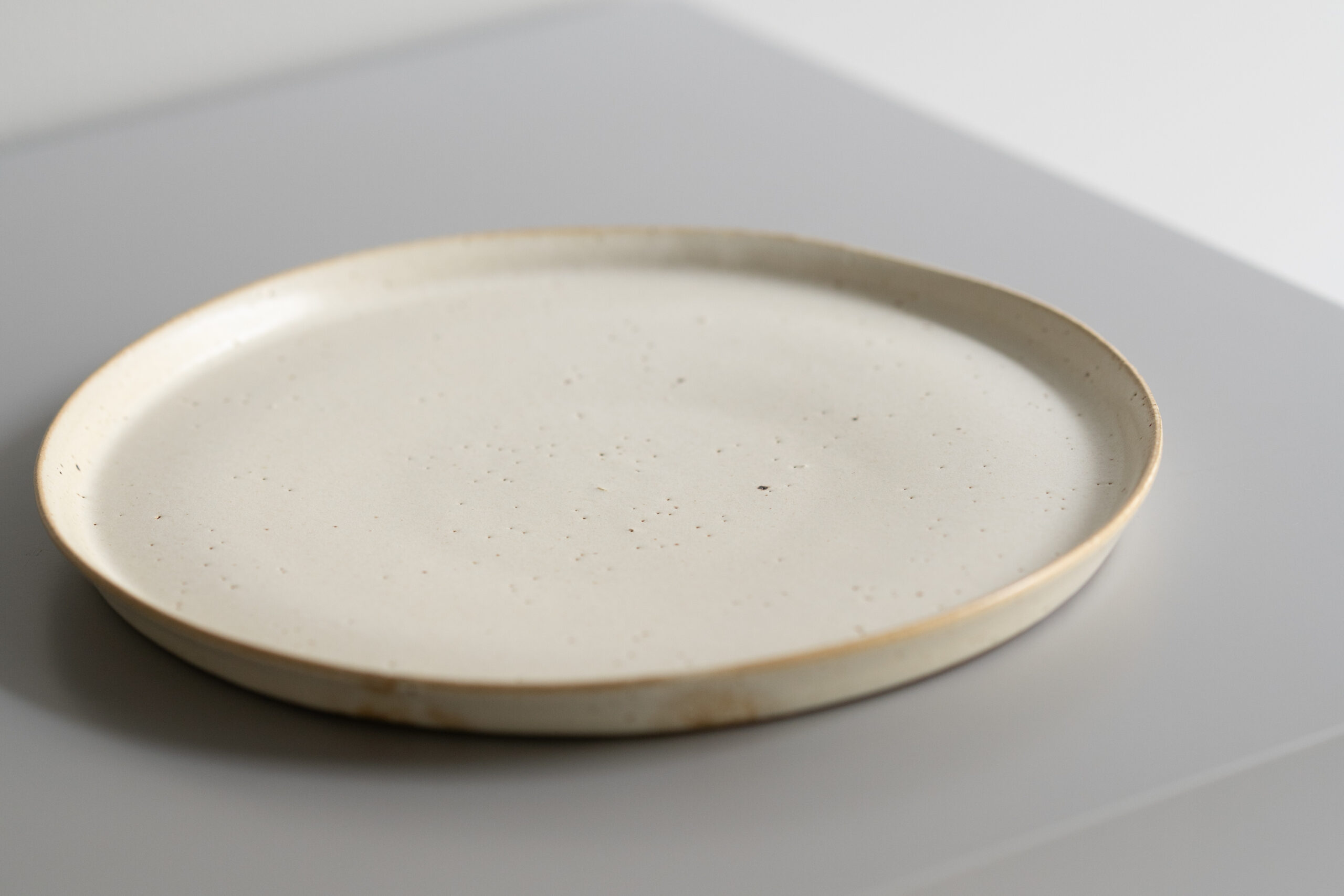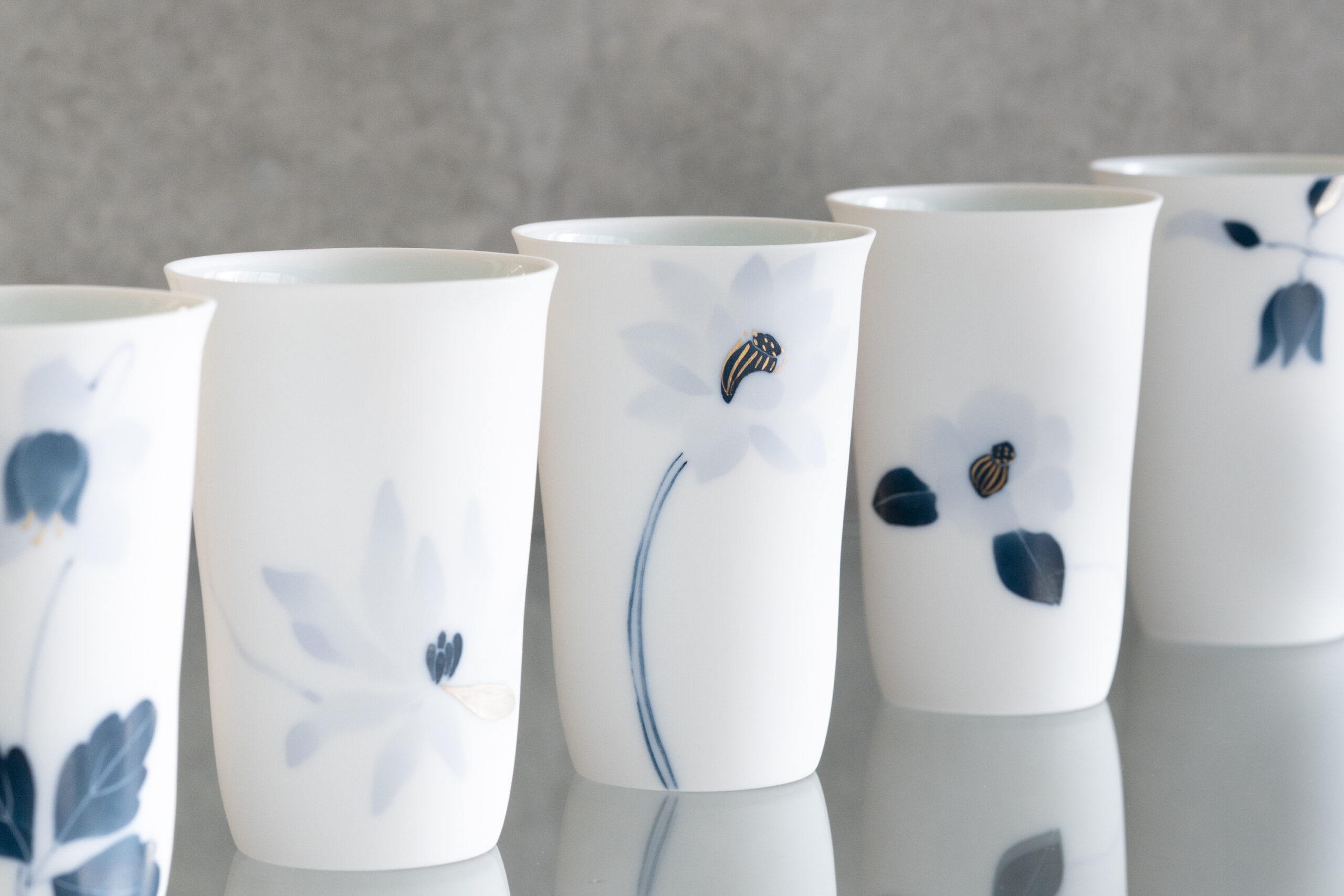HULS GALLERY TOKYO is holding an exhibition of Eifu Kawamata of “Okeei”, a workshop of Edo yui-oke Wooden tubs. The title of this exhibition “Joining Plain Wood” implies that Okeei connects the tradition of Edo yui-oke to the future, and makes the tubs by joining wooden slats. We interviewed Mr. Kawamata for this exhibition.
―Mr. Kawamata, you are the 4th generation of Okeei founded in 1887. While faithfully facing the tradition of the Edo yui-oke Wooden tub, you pursue your own expression with a contemporary design. How many years has it been since you began your career as a craftsman?
It’s been about 40 years.
―I heard that there was no instruction book on how to make it. Is it true that you remember everything with your senses?
Certainly. Everything was handed down from mouth to ear from my father. Each craftsman has different powers and physiques. If he only does what he is told, he can make only average products. I realized that at some point, and after modifying it in my own way, I became able to make good things. That’s what I think.
―Please tell us the part of your work that makes you feel the identity of Okeei that has been passed down from generation to generation?
Being honestly inheriting traditional techniques. And the material that has not been changed.
―I feel your efforts created the image of Okeei today. Okeei’s work has a universal beauty. You are a pioneer of adopting the nickel silver hoops and are pursuing your own design. In addition, you are also working with designers and artists.
I was inherently interested in various things, modern art, architecture and tableware for example. Sometimes hints provided by those different genres can lead to my ideas of creation. Regarding nickel silver hoops, it was developed 25 or 30 years ago. Copper and bamboo are the most common materials for the hoops, but I searched for a better material. As the number of my works with my own design increased, the designers and artists who saw them began to approach me.
―Please tell us the main features of Edo yui-oke Wooden tub. What is the difference from the tubs made in other areas?
The features of a general Edo yui-oke are that it is strong enough, easy to use, and has a good shape. As Tokyo is a place where people gather, the amount of production and jobs were high. It can be said that the skills have been progressed and refined due to the environment in which the artisans have worked hard by learning from others.
―Your works are made from Sawara cypress (Chamaecyparis pisifera) grown in Kiso area in Nagano Prefecture, which is over 300 years old, through a number of processes. How long does it take from the selection of materials to the finish of a work?
It takes at least 18 months. In some cases it may take 4-5 years. The wood used as the material needs to be stored in the logs for a year, and then exposed to the rain for 4-6 months after it is split. It is also called sun-drying, but it is not only for drying but also for stabilizing the condition of wood. During that time, I visit the place for lumber storage called “doba” many times to check the condition.
―For this exhibition, your new sakeware collection is released: Sake server, Sake cup, and Old glass tumbler. They are made with the technique of Edo yui-oke. Please explain about the creation such as the design and method.
First, I chose Japanese cypress as the material. I thought the smooth texture and aroma of Japanese cypress are good for drinking. It also feels good on the lips resulting from its finishing. For the sake cup, I considered the position of the hoops so that it would be easy to use. And the spout of the sake server is trimmed to prevent dripping. My customers often requested sakeware, but I didn’t have time to devote myself to making a new product. It was good to be able to calmly work under the Corona related confusion.
―The exhibition information from HULS GALLERY is also viewed by overseas customers.
Many people may think that the wooden containers are used for cooked rice. However, do you have any suggestions on how to use it in areas with different food cultures? How can it be used overseas, for example? In addition to cooked rice, we can keep bread and sweets in it. The Edo styled cooked rice keeper with a cover lid is popular with overseas customers because of the appeal of the lid shape. Also, I was impressed by a Russian customer who bought a container with a lid to put pancakes for caviar. The customer was pleased that it resembled a container that used to be in Russia.
―Please tell us the recommended pieces for the customers of HULS GALLERY.
I recommend the oval container. It should be a recent masterpiece of Okeei. And, relaxing bath tools are also recommended.
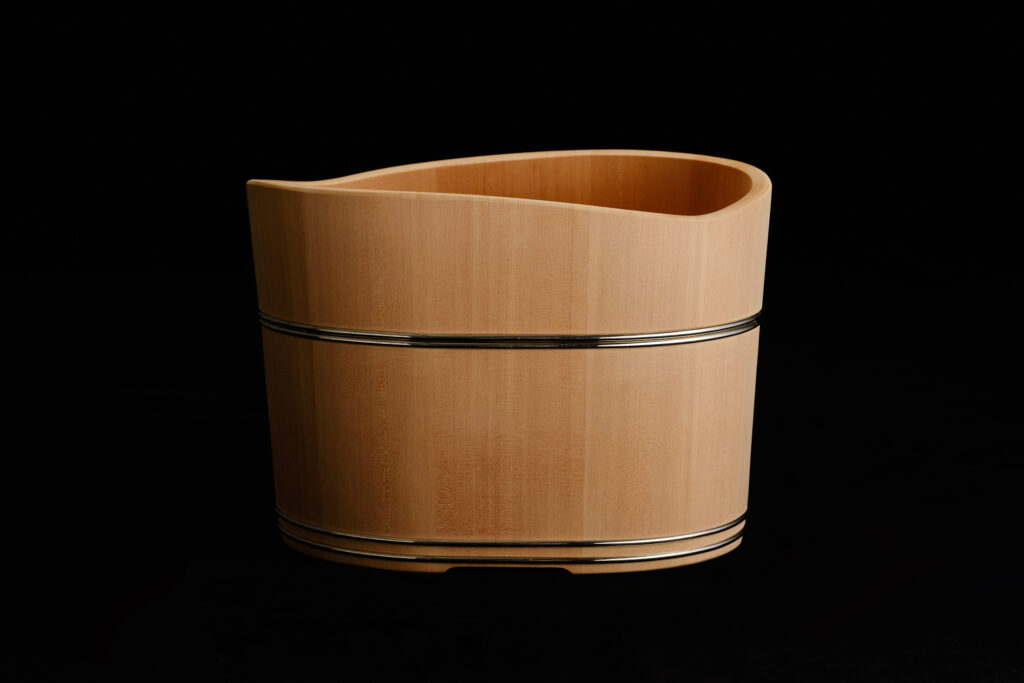
―Please give a message to the visitors to the exhibition.
Please feel the overall balance, the gentle curves that have been carved out, the smooth texture and the refreshing aroma that you can’t find anywhere else.
Edo yui-oke wooden tub “Okeei” Eifu Kawamata Exhibition “Joining Plain Wood”
Date: 27th July (Tue) – 11th August (Wed) 2021, 10 a.m. – 6 p.m.
*Closed on Sunday and public holiday
Venue: HULS Gallery Tokyo
*Please note that the event is subject to change depending on the situation of COVID-19. Please check our website for the latest information.
